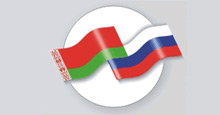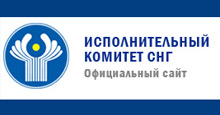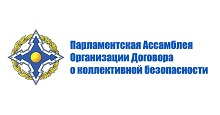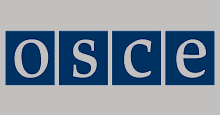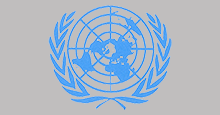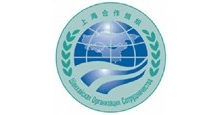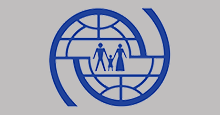On 25 July 2024, staff of the CSTO Secretariat met with graduates of Central Asian universities in the fields of “International relations” and “Regional studies” who are participating in the International School of Diplomacy and are in Moscow at the invitation of the Autonomous Nonprofit Organization ‘National Research Institute for the Development of Communications’ and the Centre for International Strategic Studies of the Diplomatic Academy of the Russian Ministry of Foreign Affairs.
Allow me to thank the Russian presidency of the United Nations Security Council for the invitation to take part in the debate on the interaction between the United Nations and regional organizations - the CSTO, the CIS and the SCO.
I highly appreciate my participation in the meeting of the main body of the World Organization responsible for maintaining global peace and international security. I am convinced that today's debate will contribute to the development of new, additional mechanisms for United Nations cooperation with the CSTO, the CIS and the SCO - the leading regional organizations operating in the Eurasian security space.
The CSTO Secretary General Imangali Tasmagambetov took part in the debate on “UN cooperation with regional organizations: the CSTO, the CIS and the SCO” held on 19 July 2024 at the UN Security Council.
Imangali Tasmagambetov, the Collective Security Treaty Organization Secretary General, told BELTA news agency correspondent whether the CSTO sought to become a counterweight to NATO, the situation in the East European region of collective security, the role of Belarus in the organization, and what initiative of the President of Belarus had become important and timely for the CSTO.
Kyrgyzstan in the time of the Great Patriotic War of 1941-1945
22.04.2020
#75 years of the Great Victory!
We remember!
During the wartime, more than 360 thousand people, or every fourth resident of the country, was sent to the army totally more than 300 thousand new residents were received. Over 30 thousand Kyrgyz people were sent to military industry factories outside the Republic.
The Kyrgyz Republic took all measures to mobilize all of the republic’s resources to meet the needs of the front, and intensified military mobilization activities.
In order to regularly provide the front with trained reserves, with the assistance and business assistance of party committees, military training centers were created in the Republic. The city party and district party committees provided daily assistance to the bodies in providing training centers with command and political staff, teaching and visual materials.
Under the leadership of the Central Committee of the Communist Party (Bolsheviks) of the Kyrgyz Republic, a sustained effort was committed to create military formations in the Republic. The best sons of the Kyrgyz Republic, formed the 316th Rifle Division under the command of Major General I.V. Panfilov, a former military commissar of the Kyrgyz SSR, a deputy of the Supreme Council of the Kyrgyz SSR, a member of the Central Committee of the Communist Party (Bolsheviks) of the Kyrgyz Republic. On its territory, the 385th Rifle Division, the 4th Rifle Brigade, the 40th and 153rd Separate Rifle Brigades, and other units were formed.
In 1943 three battalions of tommy gunners named after Heroes of The Soviet Union Cholponbai Tuleberdiev, Duishenkul Shopokov and “The Checkist of Kyrgyzstan” were formed.
Also soldiers from the Kyrgyz Republic were deployed to the other military bases and units located outside of the Republic.
Until the end of 1943, over 1,500 senior staff members consisting in the nomenclature of the Central Committee were sent to replenish the command and political staff of the Red Army of the Central Committee of the Communist Party of the Kyrgyz Republic. Among them are Secretary of the Central Committee of the Communist Party of the Kyrgyz Republic A. Rysmendiev, Deputy Chairman of the Presidium of the Supreme Council of the Kyrgyz SSR V.V. Fadeev, First Secretary of the Frunze Regional Party Committee S.K. Soloviev, First Secretary of the Tien Shan Regional Committee of the Party M. Boshkoev, Head of the Coal Ore Department of the Central Committee G. A. Ukhanov, Head of the Military Department of the Frunze Regional Party Committee A. Otorbaev and many others.
In November 1941, The State Defense Committee, according to the difficult situation in the country, decided to form national military units in the Kyrgyz Republic, as well as in other Central Asian republics. Later, in February 1944, at a session of the Supreme Soviet of the USSR, the creation of military units of the Union republics was legislatively consolidated. These events of the Communist Party and the Soviet state expanded the rights and obligations of the Union republics in relation to the preparation of the reserves of the Red Army, and further strengthened the unity and fraternal friendship of the peoples in the fight against the sworn enemy.
By the decision of the Central Committee of the Communist Party (Bolsheviks) of the Kyrgyz Republic of November 28, 1941, the 107th, 108th and 109th Kyrgyz cavalry divisions were formed in the Republic. To provide the new formations with the political composition of the Central Committee, the Communist Party of Bolsheviks of the Kyrgyz Republic sent a large group of leading Party, Soviet and Komsomol workers. For example, A. Imanaliev became the commissar of one of the cavalry divisions, B. Shayakhmetov, O. Ilmuratov, B. Baybulatov became the regiment commissars, Y. Amraev became the artillery division commissar, A. Dunganov, U. Baysariev, T. Dzhunusov, A. Akhmetov, A. Chotbaev and others became the political workers of the divisions.
Manning divisions with personnel, horse population, services, and food supplies were organized at the expense of the republic's internal resources. Collective and state farms delivered for them 1478 horses, 66 trucks, 222 carts with harness, a lot of food, fodder and cash.
Battalions, regiments and divisions created on the territory of the Kyrgyz Republic, were sent to the front after appropriate training.
Together with all the fraternal peoples, the Kyrgyz warriors traveled the entire difficult and heroic path of the battle against the fascism. They mercilessly defeated the invaders on the brink of Moscow, near the city of Leningrad, in the Battle of Stalingrad, on the Kursk Bulge, in the vastness of Ukraine, the Republic of Belarus, the Baltic states, in Poland, Romania, Hungary, Czechoslovakia, Germany.
In the great Battle of Moscow, the famous 316th, subsequently 8th Guards Rifle Division commanded by Major General I.V. Panfilov, distinguished itself. An unfading exploit was accomplished by 28 Panfilov guards who defended the approaches to the capital. Among them were the Kyrgyz warriors - Duishenkul Shopokov, Grigory Petrenko, Nikolai Ananyev, Grigory Shemyakin, Ivan Moskalenko, Grigory Konkin.
Almost all of them died a hero’s death but stopped the Nazi tanks at their defensive positions. On November 19, 1941, the division commander, Major General I.V. Panfilov, died a hero’s death. He was also posthumously awarded the title of Hero of the Soviet Union.
The legendary feat was accomplished by the Komsomol member Cholponbai Tuleberdiev. On August 6, 1942, in the battle on the western bank of the Don, to the south of Voronezh, he covered an enemy weapon port with his body and ensured the successful completion of a combat mission at the expense of his life. The courageous son of the Kyrgyz people was posthumously awarded the title Hero of the Soviet Union. He is forever enlisted in the list of the rifle regiment, and on the west bank of the Don a monument is erected to him.
In the iron years of the Great Patriotic War, the Kyrgyz Republic was far behind enemy lines. The war abruptly changed the usual rhythm of life in the Republic. The restructuring of economic life from peaceful to military, the expansion of production capacities, and the quick commissioning of evacuated enterprises were the most important tasks of wartime.
Under the supervision of local party organizations, every enterprise of the Republic revised its production plans and product range, organized new production, mobilized internal reserves. Some factories and plants immediately stopped producing civilian goods and switched to manufacturing defense products according to a special plan.
During the Great Patriotic War, equipment of more than 30 factories from the temporarily occupied regions of Ukraine, Russia and the Republic of Belarus was evacuated to the Republic. On the basis of the evacuated factories, new factories were built that began in a short time to produce the products necessary for the front. They became the most important factor in enhancing all-round assistance to the front. Among them are: the factory “Red Machinist”, the factory “Red Metalworker”, an agricultural-machine plant named after M.V. Frunze, Osh silk factory, Novotroitsky, Kant, Belovodsky sugar factories, Kenaf factory, etc.
Thanks to the efforts of party organizations, communists and all the working people of the Republic, the majority of the evacuated plants and factories in late 1941, and a part in the first half of 1942, went into operation and started working at full capacity. They began to manufacture products for the front.
In total, over the years of the war more than 70 industrial enterprises were commissioned. Significant development was gained in engineering, non-ferrous metallurgy, coal industry, energy, and some sectors of light and food industries. The volume of industrial production in 1945 compared with 1940 increased by 22 percent, engineering and metalworking products increased by 3.5 times, including engineering increased by more than 10 times, electricity production was multiplied by 1.5 times. The share of industry in the national economy of the Republic in 1945, compared with 1940, as a whole increased from 50.2 percent to 67.5 percent.
Overcoming the enormous difficulties associated with the shortage of people and equipment, the party organization of Kyrgyz Republic sought to maintain the necessary level of agricultural production in the Republic in order to uninterruptedly provide the army and population with food, and industry with raw materials. Collective farms and state farms expanded sown areas. In total, during the war years, the agricultural workers of the Republic gave the state significantly more products than in the five pre-war years.
In total, during the war years, the Soviet Kyrgyz Republic supplied 7 million tons of coal, 1.3 million pairs of leather shoes, 8.6 million sewing and knitwear, 1239.3 thousand meters of silk and wool fabrics, 94.4 million units of canned meat, 177 thousand tons of sugar, 839 thousand tons of bread, 57 thousand tons of potatoes, 57.8 thousand tons of vegetables, 128, 6 thousand tons of meat and many other industrial and agricultural products.
The lead from Ak-Tyuz, mercury and antimony from Khaidarkan and Kadamzhai, cotton, wool and parachute silk, bread and meat products - all that the Republic had in those years was put at the service to the Great Victory.
Due to the increased demand for electricity from the evacuated factories, the construction of the Lebedinovskaya hydroelectric power station was resumed and a decision was made to build the Alamedin hydroelectric power station-1, which began in 1943 and ended in 1945. In 1943, the construction of the first stage of the Bolshoi Chuisky Canal was also completed. All these objects were built by the method of national construction. In 1942, the Khaidarkan mercury plant was commissioned. The increased demand for coal has caused a sharp increase in the growth rate of mine construction operations.
For the courage and bravery shown on the Great Patriotic War fronts, more than 150 thousand Kyrgyz soldiers were awarded orders and medals, of which 74 people were awarded the title of Hero of the Soviet Union, 21 soldiers were awarded the Order of Glory of three degrees.
Workers of the KSSR voluntarily transferred their own funds for the needs of the army. At the expense of the funds raised, several dozen tanks and aircraft were built, orphanages for the children of dead soldiers and front-line soldiers were created. In total, more than 189 million rubles in cash, 964 million bonds and 56 kg of silver were collected.
An imperishable memory of the heroes who gave their blood and lives for the motherland and for the better tomorrow!

